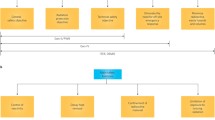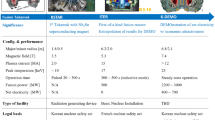Abstract
Experience from fission reactors has shown the regulatory process for licensing a nuclear facility to be legalistic, lengthy, unpredictable, and costly. This experience also indicates that much of the regulatory debate is focused on safety margins, that is, the smaller the safety margins the bigger the regulatory debate and the greater the amount of proof required to satisfy the regulator. Such experience suggests that caution and prudence guide the development of a regulatory regime for fusion reactors. Fusion has intrinsic safety and environmental advantages over fission, which should alleviate significantly, or even eliminate, the regulatory problems associated with fission. The absence of a criticality concern and the absence of fission products preclude a Chernobyl type accident from occurring in a fusion reactor. Although in a fusion reactor there are large inventories of radioactive products that can be mobilized, the total quantity is orders of magnitude smaller than in fission power reactors. The bulk of the radioactivity in a fusion reactor is either activation products in steel structures, or tritium fuel supplies safely stored in the form of a metal tritide in storage beds. The quantity of tritium that can be mobilized under accident conditions is much less than ten million curies. This compares very favorably with a fission product inventory greater than ten billion curies in a fission power reactor. Furthermore, in a fission reactor, all of the reactivity is contained in a steel vessel that is pressurized to about 150 atmospheres, whereas in a fusion reactor, the inventory of radioactive material is dispersed in different areas of the plant, such that it is improbable that a single event could give rise to the release of the entire inventory to the environment. These intrinsic features give fusion a significant safety and environmental advantage over fission. With such significant intrinsic safety advantages there is noa priori need to make fusion requirements/regulations more demanding and more stringent than fission. To do so could have the effect of making the licensing process more difficult, more costly, and less certain. The result could be a delay in the advent of a safer and more environmentally benign energy system.
Similar content being viewed by others
References
ICRP 60. 1990 Recommendations of the International Commission on Radiological Protection. Annals of the ICRP, Vol. 21, Nos. 1–3, Pergamon Press.
C. W. Bagnalet al. (1992). System 80 + PWR design.J. Nucl. Safety 33, (1) January–March.
B. A. McIntyre and R. K. Beck (1992). Westinghouse Advanced Passive 600 Plant.J. Nucl. Safety 33, (1) January–March.
International Nuclear Safety Advisory Group. Basic Safety Principles for Nuclear Power Plants, 75-INSAG-3, International Atomic Energy Agency, Vienna, 1988.
Author information
Authors and Affiliations
Rights and permissions
About this article
Cite this article
Natalizio, A., Sood, S.K. & Brunnader, H. Regulatory aspects of fusion power-lessons from fission plants. J Fusion Energ 12, 195–199 (1993). https://doi.org/10.1007/BF01059378
Issue Date:
DOI: https://doi.org/10.1007/BF01059378




